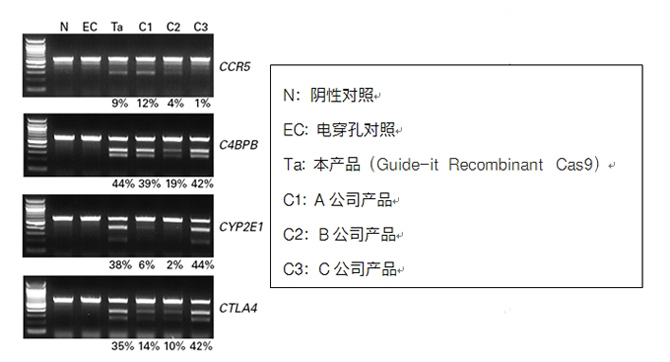M-CSF的重组小鼠细胞因子Recombinant Mouse M-CSF
- 产品型号: RD 416-ml-010
- 简单描述
- M-CSF的重组小鼠细胞因子Recombinant Mouse M-CSF也被称为CSF1细胞因子,巨噬细胞的存活,增殖和分化(1)主要监管机构纤细说明书在产品详细介绍中
详细介绍
M-CSF的重组小鼠细胞因子Recombinant Mouse M-CSF
DESCRIPTION
Source E. coliderived
Lys33Glu262,
with an Nterminal
Met
Accession # Q3U4F9
Nterminal
Sequence
Analysis
Met
Structure / Form Disulfidelinked
homodimer
Predicted Molecular
Mass
26 kDa (monomer)
SPECIFICATIONS
SDSPAGE
29 kDa, reducing conditions
Activity Measured in a cell proliferation assay using M-NFS-60 mouse myelogenous leukemia lymphoblast cells. Halenbeck, R. et al. (1989)
Biotechnology 7:710.
The ED50 for this effect is typically 0.5-3 ng/mL.
Endotoxin Level <1.0 EU per 1 μg of the protein by the LAL method.
Purity >97%, by SDSPAGE
under reducing conditions and visualized by silver stain.
Formulation Lyophilized from a 0.2 μm filtered solution in PBS with BSA as a carrier protein. See Certificate of Analysis for details.
PREPARATION AND STORAGE
Reconstitution Reconstitute at 100 μg/mL in sterile PBS containing at least 0.1% human or bovine serum albumin.
Shipping The product is shipped at ambient temperature. Upon receipt, store it immediay at the temperature recommended below.
Stability & Storage Use a manual defrost freezer and avoid repeated freezethaw
cycles.
l 12 months from date of receipt, 20
to 70
°C as supplied.
l 1 month, 2 to 8 °C under sterile conditions after reconstitution.
l 3 months, 20
to 70
°C under sterile conditions after reconstitution.
BACKGROUND
MCSF,
also known as CSF1,
is a fourαhelicalbundle
cytokine that is the primary regulator of macrophage survival, proliferation and differentiation (1 3).
MCSF
is also essential for the survival and proliferation of osteoclast progenitors (1, 4). MCSF
also primes and enhances macrophage killing of tumor cells and
microorganisms, regulates the release of cytokines and other inflammatory modulators from macrophages, and stimulates pinocytosis (2, 3). MCSF
increases during
pregnancy to support implantation and growth of the decidua and placenta (5). Sources of MCSF
include fibroblasts, activated macrophages, endometrial secretory
epithelium, bone marrow stromal cells and activated endothelial cells (1 5).
The MCSF
receptor (cfms)
transduces its pleotropic effects and mediates its
endocytosis. MCSF
mRNAs of various sizes occur (3 9).
Full length mouse MCSF
transcripts encode a 520 amino acid (aa) type I transmembrane (TM) protein with
a 462 aa extracellular region, a 21 aa TM domain, and a 37 aa cytoplasmic tail that forms a 140 kDa covalent dimer. Differential processing produces two
proteolytically cleaved, secreted dimers. One is an Nand
Oglycosylated
86 kDa dimer, while the other is modified by both glycosylation and chondroitinsulfate
proteoglycan (PG) to generate a 200 kDa subunit. Although PGmodified
MCSF
can circulate, it may be immobilized by attachment to type V collagen (8). Shorter
transcripts encode M CSF
that lacks cleavage and PG sites and produces an Nglycosylated
68 kDa TM dimer and a slowly produced 44 kDa secreted dimer (7).
Although forms may vary in activity and halflife,
all contain the Nterminal
150 aa portion that is necessary and sufficient for interaction with the M CSF
receptor
(10, 11). The first 229 aa of mature mouse MCSF
shares 87%, 83%, 82% and 81% aa identity with corresponding regions of rat, dog, cow and human MCSF,
respectively (12, 13). Human MCSF
is active in the mouse, but mouse MCSF
is reported to be speciesspecific.
M-CSF的重组小鼠细胞因子Recombinant Mouse M-CSF
References:
1. Pixley, F.J. and E.R. Stanley (2004) Trends Cell Biol. 14:628.
2. Chitu, V. and E.R. Stanley (2006) Curr. Opin. Immunol. 18:39.
3. Fixe, P. and V. Praloran (1997) Eur. Cytokine Netw. 8:125.
4. Ryan, G.R. et al. (2001) Blood 98:74.
5. Makrigiannakis, A. et al. (2006) Trends Endocrinol. Metab. 17:178.
6. Nandi, S. et al. (2006) Blood 107:786.
7. Rettenmier, C.W. and M.F. Roussel (1988) Mol. Cell Biol. 8:5026.
8. Suzu, S. et al. (1992) J. Biol. Chem. 267:16812.
9. Manos, M.M. (1988) Mol. Cell. Biol. 8:5035.
10. Koths, K. (1997) Mol. Reprod. Dev. 46:31.
11. Jang, MH.
et al. (2006) J. Immunol. 177:4055.
12. DeLamarter, J.F. et al. (1987) Nucleic Acids Res. 15:2389.
13. Ladner, M.B. et al. (1988) Proc. Natl. Acad. Sci. USA 85:6706.



.png)
.png)
.png)
.png)
.png)
.png)
.png)







